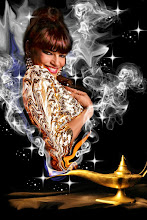

At first glance, these two books may not seem to be connected, but Wendy Buonaventura’s “Midnight Rose” about Edwardian dancer Maud Allan, and Lawrence Morgan’s “Flute Of Sand”, detailing Morgan’s experiences with Ouled Nail dancers in 1950’s Algeria have more in common than anyone might guess.
To begin with, both books are released by Cinnabar Press, Wendy Buonaventura’s publishing house, which focuses on women’s history with an emphasis on the arts. Belly dancers, aficionados and dance scholars may recognize Buonaventura as the author of the extremely well received and gorgeously illustrated Oriental Dance reference book, “Serpent Of The Nile”, which is scheduled to be re-printed in late 2009. She is also a working dancer- performing, teaching and lecturing internationally, as well as the founder of the popular UK dance festival Sirocco.
Both books, each in their own way, focus on female dancers, their relationship to mainstream society, and the double-edged sword of their artistry and sexuality as it challenged the social mores of their times.
Buonaventura’s “Midnight Rose” is based upon the life and times of Maud Allan, the Orientalist performer of the Edwardian Era, who, along with the likes of Mata Hari, Isadora Duncan and Ruth St. Dennis, both delighted audiences and caused uproarious scandals with their performances, which typically involved at least partial nudity. In a time when stage actors and dancers were considered to be not much better than “gypsies, tramps and thieves”, Allan’s (at the time) wanton “Vision Of Salome” made her a celebrity, but also created such a scandal that she was widely and publicly reviled alongside all the adulation her audiences and fans bestowed upon her. In 1918 a newspaper article entitled “ The Cult Of The Clitoris” insinuated she was a lesbian and Allan sued for libel. The ensuing trial illuminated the ignorance and hypocrisies of the time period. Painstakingly researched, this fictionalized account of the life and times of Maud Allan is deftly stylized, and an extremely engaging read, bringing to life the feel of a by-gone era.
Morgan’s “Flute of Sand”, on the other hand, is a first-person non-fiction account of his life among the Ouled Nail in Algeria’s Bou Saada Oasis, originally published in 1956. If you are not familiar with the Ouled Nail, they were a nomadic matriarchal tribe ruled by female dancers, famous the world over for hundreds of years due to their dance skills. Many of them had a number of husbands-or bona fide male harems- which they supported via their dancing (sometimes clothed, sometimes naked with blindfolded musicians) as well as with prostitution… something they were proud of and not even remotely ashamed about. The Ouled Nail were the living embodiment of strong-willed and empowered women, confident and comfortable with both their performance skills and sexuality. This account of Morgan’s life among them as he traveled through North Africa is beyond fascinating- I literally could not put the book down. The descriptive passages describing their performances, the intrigue among the women themselves, their relationships to audiences, clients and lovers; and the minutely detailed takes on their every day lives as well as what they wore are breathtaking. Though authentic photos of these amazing women are few and far between, just take a glance at the Ouled Nail dancers pictured on the book’s cover to see the influence their unique look has had upon ATS dancers!
Kudos to Ms. Buonaventura for the work she does as a dancer, author and publisher- I highly recommend both books-they are a must for any serious belly dancer’s library…. and civilians might like them too!
“ MIDNIGHT ROSE” by Wendy Buonaventura
“FLUTE OF SAND” by Lawrence Morgan
(Cinnabar Press) available at www.cinnabarbooks.co.uk











Must go get these books!
ReplyDeleteRight at the top of my wishlist now
ReplyDeleteJust came upon this blog post and wanted to say (6 years late!) thank you, Princess, for your clear and expressive writing and for the references to these great books. Thank you!
ReplyDelete